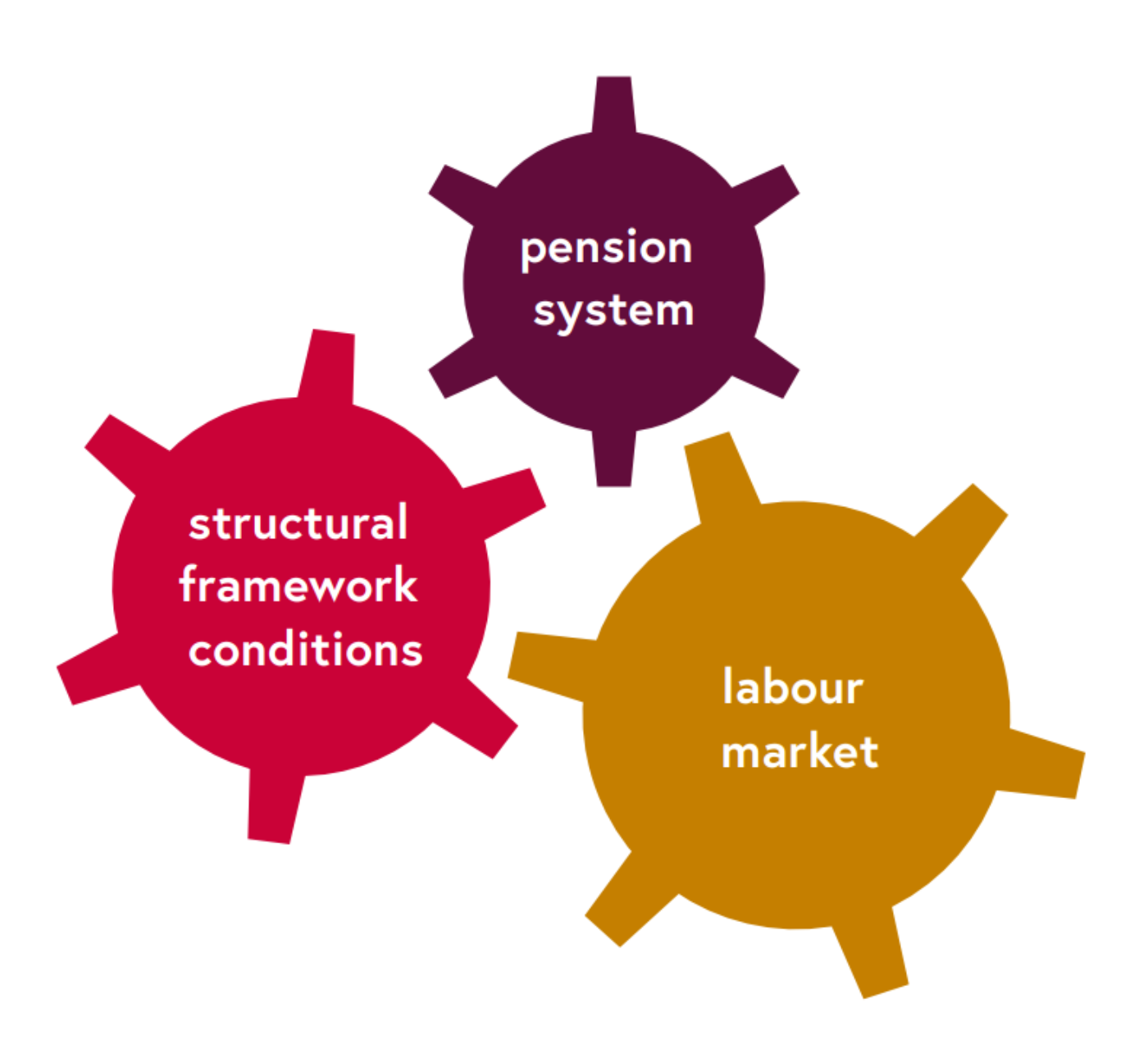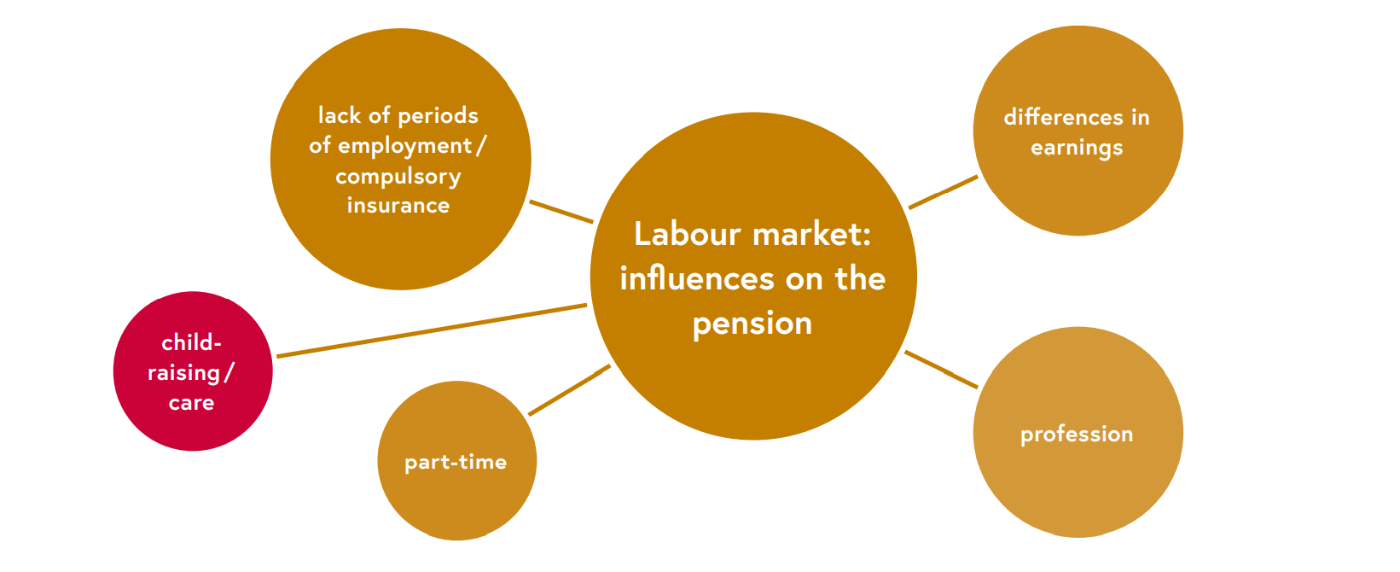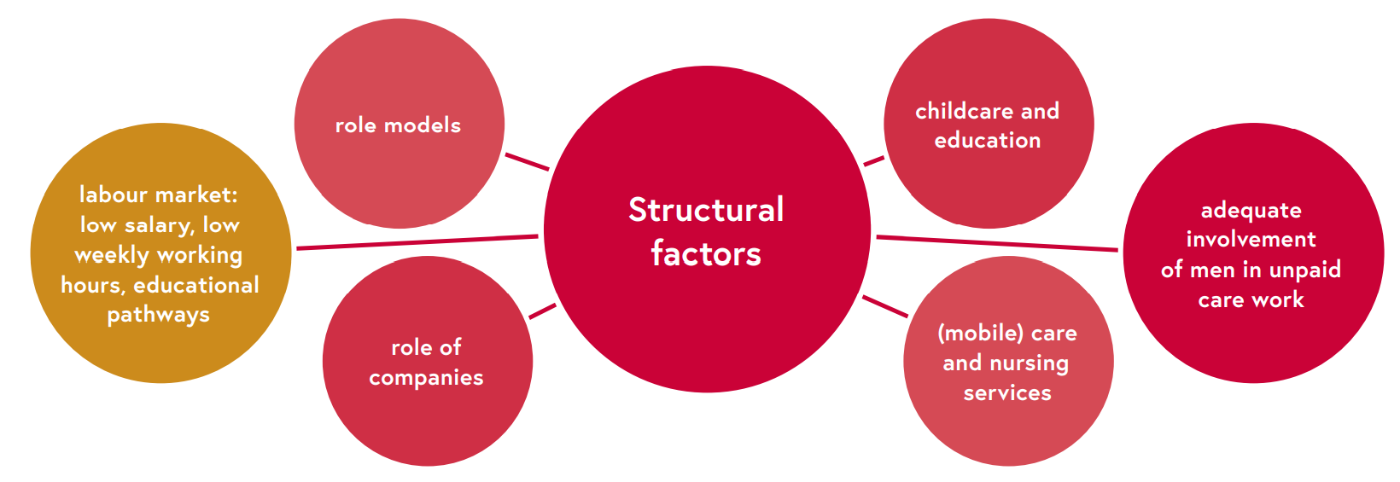TRAPEZ.Analysis: Facts, Data, Numbers
In TRAPEZ.Analysis, WIFO and FORBA conducted a joint analysis consisting of a quantitative and a qualitative sub-study. This made it possible to shed comprehensive light on the causes and factors of the Gender Gap in Pensions (GGP), i.e. the gender-specific difference in old-age pension levels. The quantitative research conducted by WIFO calculated and analysed the Gender Pension Gap in Austria, and studied the underlying factors and its effects in a component’s analysis of the gap. FORBA's qualitative research aimed at identifying the state of knowledge, the individual perceptions and the possibilities of actions among the target group of employed women to secure their pension entitlements. A synthesis research report including proposals and recommendations was published in 2020 in both English and German. This study sheds light on factors of the GGP and their effects on women and, for the first time, makes women’s perspectives on this topic visible.
For more details, see the study "TRAPEZ.ANALYSIS – Gender Gaps in Pensions in Austria: Quantitative and Qualitative Analysis" by WIFO and FORBA:
The GGP compares the old-age income of women with that of men and shows the difference as percentage. In that way, the economic inequality of the entire working life at a given point in time is illustrated. Among all newly awarded old-age pensions in 2018, the gender gap in pensions was 42.3 percent on average and 49.2 percent in median (2017: 44.1 and 51.0 percent, respectively). More detailed, in 2018, employed women received 49.4 percent lower pensions than men did (2017: 51.4 percent). Moreover, this gap was a bit lower for self-employed traders (2017: 41.2 percent) while it was the lowest for female farmers (2017: 23.9 percent).

As the GGP analysis shows, labour market-related factors contribute significantly to lower pensions for women:
- Lower employment income of women due to the structural earnings gap
- Fewer insurance years from employment, which are only partially supplemented by more partial insurance years (child-raising periods).

Therefore, the majority of the pension gap is caused by the lower employment income. The shorter insurance duration of women has the second largest influence.

The gendered division of labour leads to longer career breaks and part-time employment for many women, which in turn leads to much lower pensions. In order to improve this situation, a fairer division at the couple level is needed, as well as a change in corporate and societal thinking.

European Exchange
A policy brief in English was published by the Austrian Society for European Policy: The gender pension gap in Austria and Europe.
Results of the research and international perspectives were also discussed in a European expert workshop in November 2019. You can find related documents herre:
European Expert Workshop, 8 and 12 November 2019
- International Perspectives on the Gender Gap in Pensions: Methodologies and Policies; Workshop 2019 (PDF, 5.689 KB) (PDF, 5 MB)
- Gerstmann: Workshop programme slides (PDF, 4.365 KB) (PDF, 4 MB)
- Bettio: Measuring, analysing, monitoring and framing the Gender Gaps in Pensions in the EU (PDF, 7.709 KB) (PDF, 7 MB)
- Mairhuber: The GGP in Austria: State of knowledge, individual perception and women's opportunities for action (PDF, 1.427 KB) (PDF, 1 MB)
- Mayrhuber: The Gender Gap in Pensions in Austria: Methodological implications of the Indicator (PDF, 2.850 KB) (PDF, 2 MB)
- Reingruber: Austrian Statutory Pension System Facts and Figures (PDF, 2.850 KB) (PDF, 3 MB)
- Scherger: Measures affecting the improvement of women's pensions in the German pension system (PDF, 3.731 KB) (PDF, 7 MB)
- Ståhlberg: The gender gap in pensions: Experiences from Sweden (PDF, 2.369 KB) (PDF, 2 MB)
